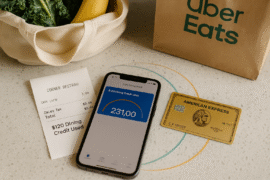This article may contain references to products or services from one or more of our advertisers or partners. We may receive compensation when you click on links to those products or services. Nonetheless, our opinions are our own.
The information presented in this article is accurate to the best of our knowledge at the time of publication. However, information is subject to change, and no guarantees are made about the continued accuracy or completeness of this content after its publication date.
- Key Highlights
- Introduction
- The Basics of Inventory Management
- The Significance of Stock Availability
- Key Terminology: Backorder and Out of Stock
- Managing Backorders and Out-of-Stock Situations
- Strategies to Mitigate Backorders and Stockouts
- Scenario Analysis: Backorder vs. Out of Stock
- Understanding the Impact on Customer Satisfaction
- Conclusion
- Frequently Asked Questions
- Recommended Reads
Key Highlights
- Understanding the difference between backorders and out-of-stock items is crucial for businesses and customers.
- Effective inventory management minimizes backorders and enhances customer satisfaction.
- Clear communication with suppliers and customers is key to addressing backorders effectively.
- Technology helps predict demand and optimize inventory levels.
- Building strong relationships with suppliers strengthens the supply chain and reduces disruptions.
Introduction
In today’s fast-paced business environment, managing customer expectations is critical. Ensuring products are available when promised can make or break a company’s reputation. However, confusion often arises between two key inventory terms: backorder and out of stock. Although these terms may sound similar, they have distinct implications for businesses and customers. This guide explains these terms and outlines effective strategies to manage them.
The Basics of Inventory Management
Inventory management balances having enough stock to meet demand without overstocking, which ties up capital and increases storage costs. Effective inventory practices are essential for businesses of all sizes, influencing customer satisfaction, cash flow, and profitability.
Poor inventory management can result in:
- Stockouts occur when a company cannot fulfill customer orders due to insufficient stock. This leads to lost sales and dissatisfied customers.
- Overstocking: Excess inventory that incurs storage costs and risks becoming obsolete.
Achieving a balance requires careful planning and understanding terms like backorder and out-of-stock, which are essential for operational excellence.
The Significance of Stock Availability
Having consistent stock availability builds trust and customer loyalty. Customers are more likely to return to a business that reliably fulfills their needs. Conversely, stock shortages or delays can drive them to competitors.
A well-maintained inventory supports a robust supply chain, ensuring smooth product flow from suppliers to customers. Businesses can predict demand and minimize disruptions by analyzing past trends and monitoring real-time inventory.
Voted "Best Overall Budgeting App" by Forbes and WSJ
Monarch Money helps you budget, track spending, set goals, and plan your financial future—all in one app.
Get 50% OFF your first year with code MONARCHVIP
Key Terminology: Backorder and Out of Stock
Backorder: A product temporarily unavailable in inventory but still available for purchase. Customers are informed of a delayed shipping date and are usually willing to wait.
Out of Stock: A product cannot be purchased because it is unavailable and its restocking timeline is uncertain. This may occur due to discontinued items, production delays, or supply chain issues.
Clear communication with customers about these statuses is essential. Businesses should provide accurate wait times for backordered items and updates about out-of-stock products.
Managing Backorders and Out-of-Stock Situations
To effectively address these challenges, businesses should focus on:
- Inventory Management: Maintain optimal stock levels through data analysis and forecasting.
- Supplier Relationships: Build reliable partnerships for timely deliveries.
- Customer Communication: Be transparent about delays and provide updates.
Step 1: Monitoring Inventory Levels
Modern inventory management systems replace manual tracking, providing real-time updates on stock changes and generating actionable reports. By analyzing historical sales data, businesses can identify patterns and prepare for demand fluctuations.
Example Chart:

Step 2: Implementing an Efficient Ordering System
An effective ordering system ensures timely stock replenishment. Businesses should:
- Set clear reorder points to signal when to order more stock.
- Use historical and market data to predict future demand.
- Automate ordering processes to reduce human error.
Step 3: Establishing Clear Communication Channels
Transparent communication improves customer satisfaction:
- Notify customers immediately about backorders.
- Provide estimated wait times and regular updates.
- Collaborate with suppliers to anticipate and resolve delays.
Strategies to Mitigate Backorders and Stockouts
- Leverage Technology: Use inventory management software to forecast demand, track shipments, and automate orders. This reduces errors and ensures a steady supply chain.
- Build Strong Supplier Relationships: Reliable suppliers can adapt to unexpected demand or supply disruptions, ensuring smooth operations.
- Maintain Safety Stock: Keep extra inventory for critical items to cushion against unforeseen spikes in demand.
Scenario Analysis: Backorder vs. Out of Stock
- Backorder: Ideal for high-demand items expected to restock soon. Example: A popular gadget temporarily unavailable due to a production delay.
- Out of Stock: Appropriate for items with uncertain availability or discontinuation. Example: A seasonal product after its sales period ends.
Understanding the Impact on Customer Satisfaction
Prompt stock fulfillment fosters loyalty and trust. Transparent communication about backorders or stockouts can mitigate customer frustration and turn potential complaints into positive experiences.
Conclusion
Understanding backorders and out-of-stock situations is crucial for effective inventory management. Businesses can minimize disruptions and enhance customer satisfaction by adopting proactive strategies, leveraging technology, and building strong supplier relationships. These steps ensure smoother operations, better customer loyalty, and a competitive edge in the market.
Frequently Asked Questions
What is the difference between backorders and out-of-stock items?
Backorders refer to products that are unavailable temporarily but can still be purchased with a delayed delivery date. Out-of-stock items are unavailable for purchase, often due to uncertain restocking timelines.
How can businesses communicate backorders effectively?
Transparency is key. Inform customers immediately, provide estimated delivery times, and keep them updated throughout the process.
What tools are best for managing inventory?
Inventory management software, such as TradeGecko, Zoho Inventory, or Fishbowl Inventory, helps track stock levels, automate orders, and forecast demand accurately.
How can small businesses avoid running out of stock?
Small businesses can:
- Maintain safety stock levels.
- Set reorder points.
- Use technology for inventory tracking.
- Diversify supplier networks.
How do backorders affect customer retention?
Frequent backorders without proper communication can harm loyalty. Clear updates and timely fulfillment can alleviate negative impacts and preserve trust.

Reviewed and edited by Albert Fang.
See a typo or want to suggest an edit/revision to the content? Use the contact us form to provide feedback.
At FangWallet, we value editorial integrity and open collaboration in curating quality content for readers to enjoy. Much appreciated for the assist.
Did you like our article and find it insightful? We encourage sharing the article link with family and friends to benefit as well - better yet, sharing on social media. Thank you for the support! 🍉
Article Title: How to Differentiate Backorder vs. Out of Stock
https://fangwallet.com/2024/11/30/backorder-vs-out-of-stock/The FangWallet Promise
FangWallet is an editorially independent resource - founded on breaking down challenging financial concepts for anyone to understand since 2014. While we adhere to editorial integrity, note that this post may contain references to products from our partners.
The FangWallet promise is always to have your best interest in mind and be transparent and honest about the financial picture.
Become an Insider

Subscribe to get a free daily budget planner printable to help get your money on track!
Make passive money the right way. No spam.
Editorial Disclaimer: The editorial content on this page is not provided by any of the companies mentioned. The opinions expressed here are the author's alone.
The content of this website is for informational purposes only and does not represent investment advice, or an offer or solicitation to buy or sell any security, investment, or product. Investors are encouraged to do their own due diligence, and, if necessary, consult professional advising before making any investment decisions. Investing involves a high degree of risk, and financial losses may occur including the potential loss of principal.
Source Citation References:
+ Inspo












































